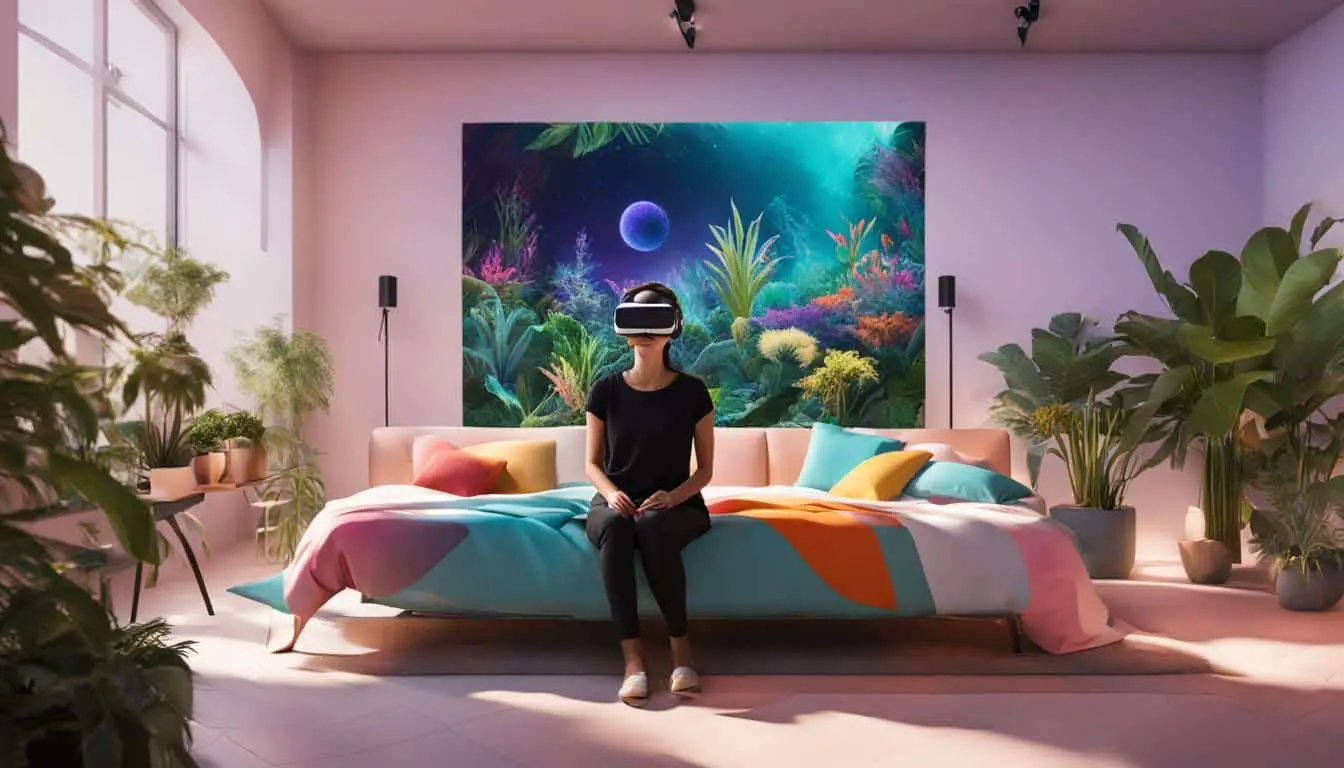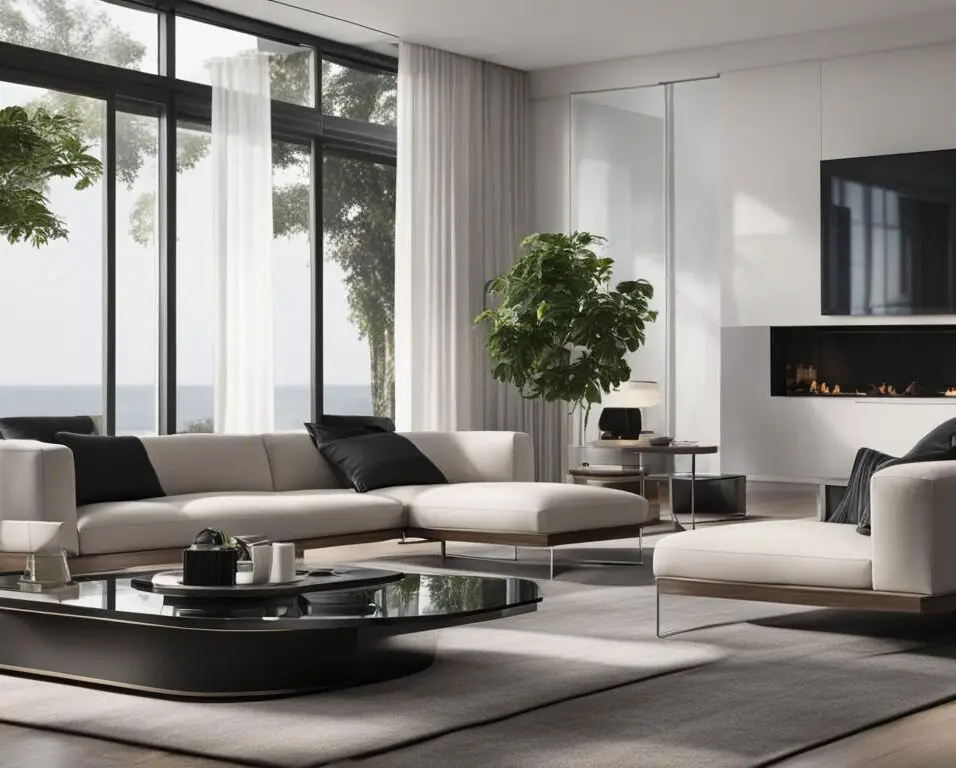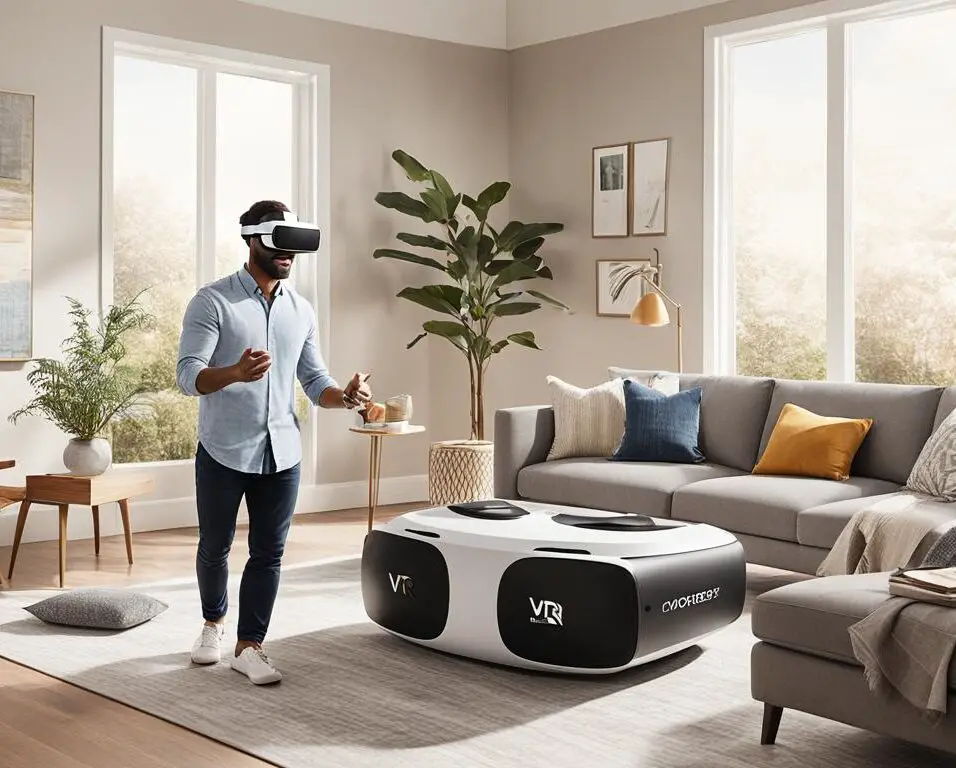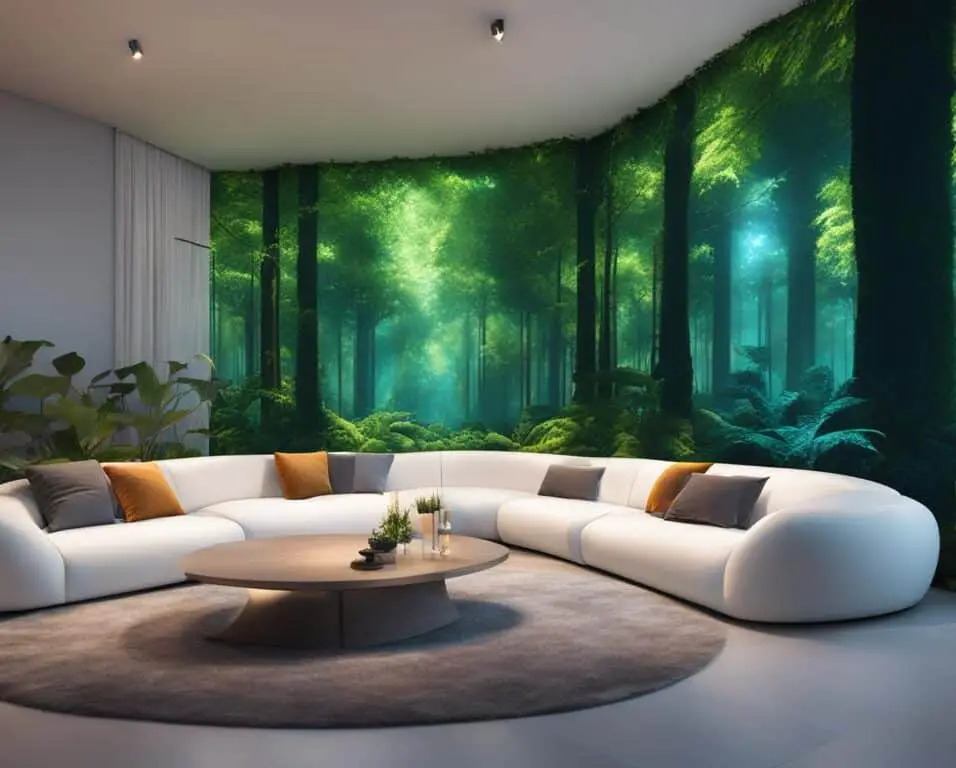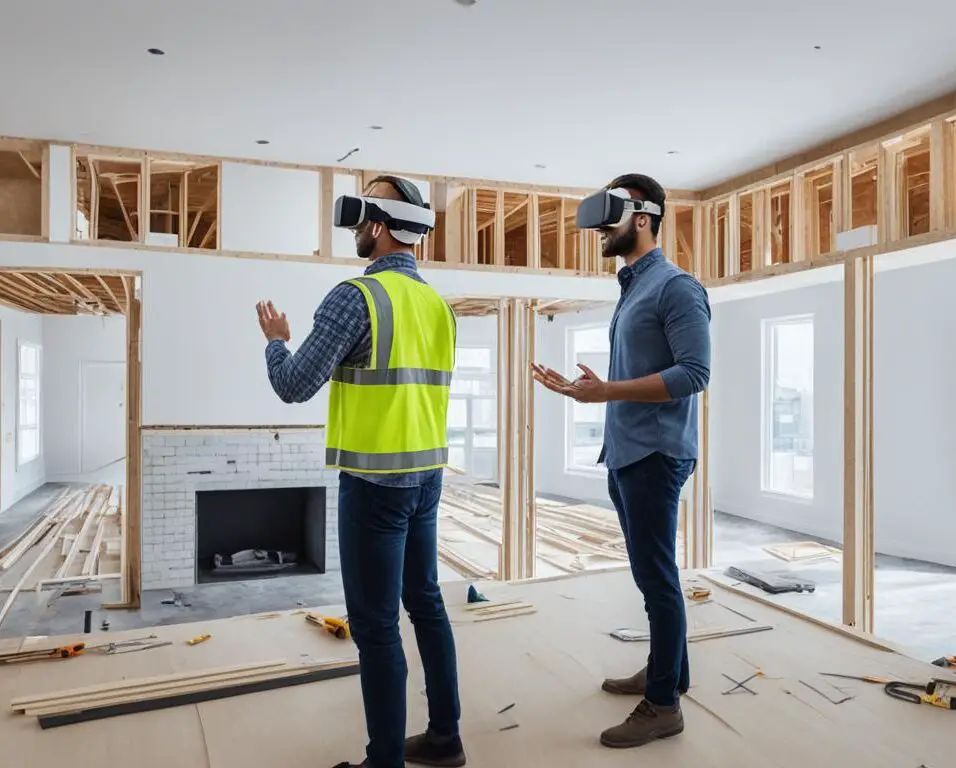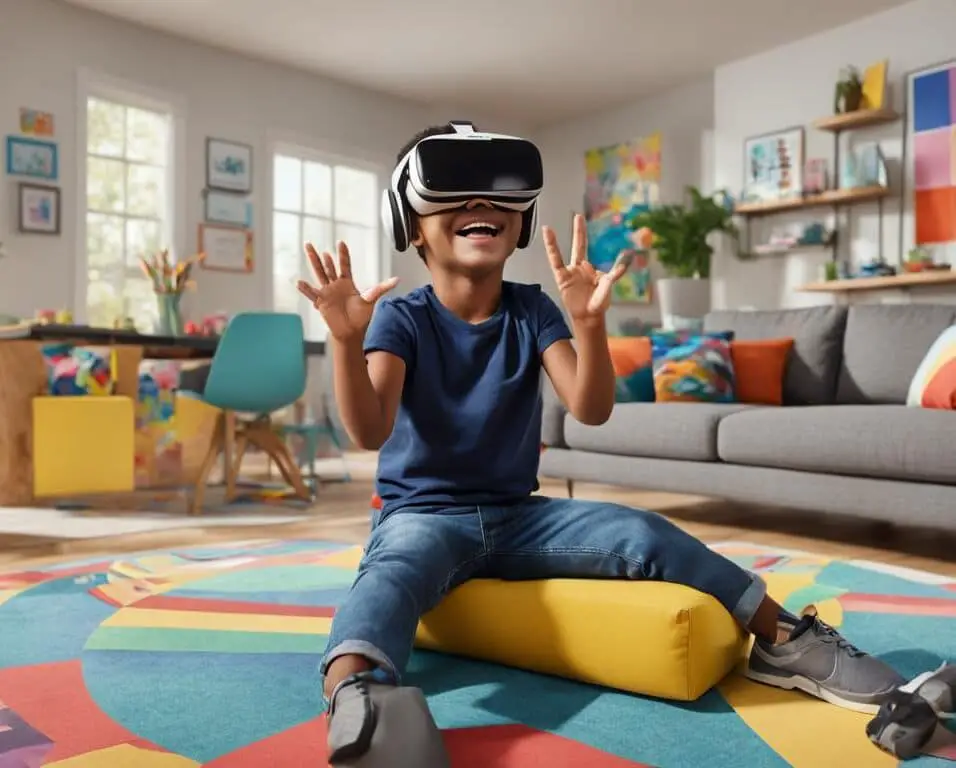Holistic Habitats: Designing Home Wellness Spaces with VR
Designing home wellness spaces has become increasingly popular, with individuals seeking to create serene and health-focused environments within their own homes. One innovative tool that is transforming the approach to designing these spaces is virtual reality (VR). By using VR technology, individuals can visualize and experience their desired wellness spaces before they are even built. This article will explore the benefits and applications of using VR for designing home wellness spaces, showcasing how it is revolutionizing the way we create serene and health-focused environments in our homes.
The Benefits of VR for Designing Home Wellness Spaces
Using VR for designing home wellness spaces offers numerous benefits. Firstly, it allows individuals to have a realistic and immersive experience of their desired space, enabling them to make informed decisions about the design and layout. VR helps in visualizing elements such as lighting, furniture, and overall aesthetics, ensuring that the final result aligns with the homeowner’s vision.
Additionally, VR allows for easy modifications and adjustments to be made in the virtual environment, saving time and costs that would be involved in physical changes. It also provides an opportunity to test different design options and evaluate how they contribute to the overall wellness of the space.
Overall, VR enhances the design process by making it more interactive, efficient, and cost-effective. By leveraging VR technology, individuals can transform their home wellness spaces into personalized sanctuaries that promote relaxation, health, and well-being.
Applications of VR in Home Wellness Space Design
When it comes to designing home wellness spaces, VR technology offers a multitude of applications. Whether you’re envisioning a spa-like retreat, a functional home gym, or a serene meditation space, VR can bring your ideas to life. Let’s explore some of the key ways VR can be utilized in creating personalized and wellness-focused spaces within the home.
1. Spa and Relaxation Areas
With VR, individuals can immerse themselves in different spa layouts, lighting options, and features such as saunas and hot tubs. This allows for a truly customized experience, enabling the creation of a soothing and luxurious space for relaxation. By visually exploring various design elements, homeowners can ensure their wellness retreat meets their exact preferences and promotes the ultimate rejuvenation.
2. Home Gyms and Fitness Areas
Designing a home gym or fitness area can be challenging, as functionality and efficiency are key. VR offers the ability to virtually test different equipment arrangements, explore flooring options, and even simulate workout routines. This technology allows users to fine-tune every aspect of their fitness space, ensuring maximum effectiveness and motivation in achieving their wellness goals.
3. Meditation Spaces
A meditation space should provide a serene and calming environment that facilitates relaxation and mindfulness. VR can assist in designing such spaces by incorporating elements such as natural scenery, calming colors, and ambient lighting. Through VR, homeowners can visualize and fine-tune every detail, ensuring their meditation space creates the perfect atmosphere for tranquility and mental well-being.
“VR technology revolutionizes the way we design home wellness spaces, offering a level of customization and immersion that was previously unimaginable.”
These are just a few examples of how VR technology can be applied to create personalized and wellness-focused spaces within the home. By harnessing the power of virtual reality, homeowners can bring their visions to life and craft environments that promote their physical, mental, and emotional well-being.
Benefits of VR Applications in Home Wellness Spaces
| Benefits | Description |
|---|---|
| Enhanced customization | VR enables individuals to visualize and personalize every aspect of their wellness spaces, ensuring a perfect fit for their needs and preferences. |
| Cost and time savings | Modifications and adjustments can be made virtually, reducing the need for physical changes and saving both time and money. |
| Increased efficiency | Through VR, different design options can be tested and evaluated, optimizing the functionality and layout of the wellness space. |
| Improved decision-making | By experiencing the virtual space, homeowners can make informed choices about lighting, furniture, and other aesthetic elements. |
With the wealth of benefits VR technology offers, it’s no wonder that it has become an essential tool in the design of home wellness spaces. By leveraging this innovative technology, individuals can create sanctuaries that cater to their unique needs, enhancing their overall well-being and quality of life.
Integrating Technology and Wellness in Home Design
Integrating technology and wellness in home design is a growing trend that offers immense possibilities for creating personalized spaces that promote relaxation, health, and overall well-being. Virtual reality (VR) technology plays a crucial role in making this integration seamless, providing innovative ways to incorporate smart home technology into wellness spaces.
With VR, users can control and adjust various features of their wellness spaces, such as lighting, temperature, and sound, through virtual interfaces. This level of control allows individuals to create the perfect ambiance to enhance their well-being. Whether it’s dimming the lights for a calming atmosphere or adjusting the temperature for optimal comfort, VR enables an immersive experience where users can tailor their environment to their specific preferences.
Moreover, VR facilitates the integration of wearable devices and sensors into the design of wellness spaces. These devices provide real-time feedback and data on metrics like heart rate, stress levels, and sleep patterns. By analyzing this data, individuals can optimize the design and functionality of their wellness spaces to support their specific needs and goals. For example, if the data shows higher stress levels during certain times of the day, the wellness space can be designed to include features like calming sounds or aromatherapy to help alleviate stress.
One compelling application of the integration between technology and wellness is the ability to create immersive and engaging fitness areas within the home. VR allows users to virtually test different equipment arrangements and simulate workout routines, ensuring maximum efficiency and functionality. Through VR, individuals can visually experience the placement of exercise equipment, flooring options, and even visualize workout routines to determine their effectiveness and make informed decisions about their home fitness spaces.
The integration of technology and wellness in home design goes beyond just controlling features or optimizing workouts. It empowers individuals to create personalized sanctuaries that cater to their unique needs and well-being. By leveraging VR technology and its seamless integration with smart home devices and wearables, homeowners can transform their spaces into serene and health-focused environments that enhance their overall quality of life.
Conclusively, integrating technology and wellness in home design is a game-changer that allows individuals to create customized, immersive, and revitalizing spaces that align with their specific needs and goals. With VR as a powerful tool, individuals can take control of their well-being, fostering an environment that promotes relaxation, health, and overall well-being.
Conclusion
In conclusion, the use of virtual reality (VR) in designing home wellness spaces has revolutionized the way we create serene and health-focused environments within our homes. VR offers a range of benefits that enhance the design process, such as providing a realistic and immersive experience of the desired space. By visualizing and experiencing the space before it is built, individuals can make informed decisions and ensure that the final result aligns with their vision.
Moreover, VR allows for easy modifications and adjustments to be made in the virtual environment, saving time and costs associated with physical changes. It also provides an opportunity to test different design options and evaluate how they contribute to the overall wellness of the space. This interactive and efficient approach to design not only improves the outcome but also enables individuals to create personalized sanctuaries that support their physical, mental, and emotional well-being.
As the demand for wellness-focused spaces continues to grow, VR will play a crucial role in transforming the way we design and experience our homes. By embracing this technology, individuals can create home wellness spaces that promote relaxation, health, and overall well-being. The possibilities for designing these spaces are truly limitless with the power of VR.
FAQ
What is the benefit of using VR for designing home wellness spaces?
Using VR allows individuals to have a realistic and immersive experience of their desired space, enabling them to make informed decisions about the design and layout. It helps in visualizing elements such as lighting, furniture, and overall aesthetics, ensuring that the final result aligns with the homeowner’s vision. Additionally, VR allows for easy modifications and adjustments to be made in the virtual environment, saving time and costs involved in physical changes.
How can VR be applied in designing home wellness spaces?
VR can be applied in various ways when designing home wellness spaces. It can be used in the design of spa and relaxation areas, enabling individuals to experience different layouts, lighting options, and features such as saunas or hot tubs, creating a soothing and luxurious space for relaxation. VR can also be used in designing home gyms or fitness areas, allowing users to virtually test equipment arrangements and simulate workout routines for maximum efficiency. Additionally, VR can be used for designing meditation spaces, incorporating natural scenery, calming colors, and ambient lighting to create a tranquil environment.
How does VR integrate technology and wellness in home design?
VR plays a crucial role in integrating technology and wellness in home design by allowing users to incorporate smart home technology into wellness spaces. Through virtual interfaces, individuals can control and adjust features such as lighting, temperature, and sound. Additionally, VR enables the integration of wearable devices and sensors into the design, providing real-time feedback on metrics such as heart rate, stress levels, and sleep patterns. This data can then be used to optimize the design and functionality of the wellness space, fostering an environment that aligns with the user’s specific needs and goals.
Source Links
- https://www.gpb.org/news/2024/01/03/watch-marta-train-cars-splash-ocean-off-georgia-coast-during-artificial-reef
- https://ajitjalandharnewspaper.com/unveiling-2021-s-must-have-tech-gadgets-the-ultimate-guide-to-elevate-your-digital-lifestyle/
- https://www.lifetechnology.com/blogs/life-technology-science-news/globular-cluster-vvv-cl002-is-falling-down-to-the-galactic-center-study-finds



